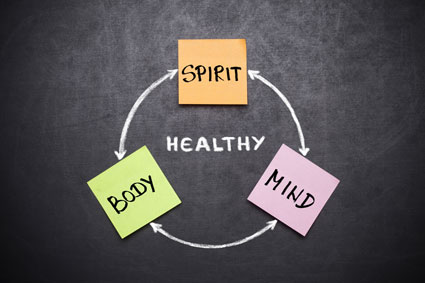As you learn to write effective workplace e-mails, you will find that you develop your own writing style. Style is the way you use words to create a certain tone, and to give your reader an overall impression.
The words you use (or don't use) can give the reader the wrong message. Without body language and the way we can "read" each other on a face-to-face basis, we have only words on a screen to rely on with an e-mail. If you know the sender well, you can often give that writer the benefit of the doubt in the case of a dubiously worded message. If the sender is a stranger, however, you have no other frame of reference.
Your writing style reflects upon you and your company, and you should tailor it to your target audience's needs and expectations. Since you send emails to a variety of people, you can make adjustments in your style according to the nature of your message and your relationship to the reader. The style and tone can range from casual to conversational to formal. If you work with a large organization and are writing to your superiors, or to potential customers, you will want to use a formal tone that shows respect.
That same tone could sound stiff and even a bit unfriendly in a quick e-mail to your colleagues, with whom you have a close relationship, however.
Just as many businesses have adopted a "business casual" mode of dress that is somewhere between the business suit and jeans and a t-shirt, you can find a middle ground with many of your workplace e-mails. This style can best be described as "conversational." In other words, you write the e-mail as if you were talking to the individual on the phone or in person.
Let's look at examples of formal, conversational, and informal tones with the same subject matter.
Formal Tone
Dear Mr. Davidson:
It was a pleasure talking with you today. As a follow-up to our conversation, I am attaching our latest brochure and newsletter for your review.
As I mentioned, our facility has state-of-the-art physical therapy and exercise equipment and a team of highly trained doctors and therapists. We offer a flexible schedule and convenient free parking. If you have any further questions or would like to arrange a private tour, please let me know.
Sincerely,
Samantha Bosworth
Conversational Tone
Hello Mr. Davidson:
Thank you for calling our office today. I have attached the information you requested.
As I mentioned on the phone, we are confident you will find that our team of professionals and our state-of-the-art facility will more than meet your physical therapy needs.
If you would like to schedule a tour of our facility, please give me a call. I would be happy to show you around and answer any other questions you may have.
Regards,
Samantha Bosworth
Informal tone
Hi Jason:
It was great to hear from you today. I am sending along the information you asked for. As I said earlier, we feel we have the best facility and professional staff in the metro area.
Please give me a call if you have any other questions. I'd also enjoy giving you a tour. Just let me know!
Take care,
Sam
As you can see, the second message works for most business communication and sounds professional without sounding stiff, stuffy or too casual. How can you create a friendly, business-like conversational tone in your workplace communication? Here are a few key steps:
-
Avoid dated language. Phrases such as, "pursuant to our conversation," "please be advised," and "attached please find," sound a bit archaic in today's business world. A conversational style uses straightforward vocabulary, short sentences and gets right to the point.
-
Be friendly but not intimate. Unless you are writing to a close friend, it is still a good idea to use the person's last name. Avoid asking personal questions or being too chatty.
-
Be careful with humor and slang. As we have said, jokes and phrases can backfire in a business e-mail and can take the reader's attention from your purpose. No joking around is worth giving the wrong impression.
-
Be concise. "Old school" business language often uses three words when one would do. Replace the stodgy, "Please do not hesitate to contact me," with "Please give me a call," and "Enclosed please find," with "Here is," for example.
-
Avoid clich�s. Some phrases have been used so much that they have lost their meaning. "At the end of the day," "going forward," and "Let's circle back," are a few examples. They can make you sound unprofessional.
-
Limit jargon. Be careful with technical terms or acronyms unless you are sure your audience is familiar with them. Otherwise, you can frustrate and confuse your reader.
-
Use variety. If you use too many long compound sentences, your message could sound boring.
Try to balance your message with different sentence types. You could write a few short simple sentences, and then add a quick question, for instance. Vary paragraph length, as well -- from several sentences, to even one sentence.
-
Find the "you." Remember your business e-mail is all about your audience. Direct your message to your readers with positive "you-oriented" language that is sensitive to their needs.
With a conversational business e-mail, your goal is to come across as approachable and friendly, while being respectful. If you would not say something in a phone conversation or a face-to-face meeting, don't write it in an e-mail. In addition, it never hurts to use your best manners.
By thanking someone for getting back to you, or for calling your business, for instance, you convey a kind and personable image. By writing something as a request, or giving the readers several choices, you show respect of their time and intelligence. Sometimes the few extra words are worth the warmth they convey.
Here are two contrasting conversational styles that reveal the importance of good manners.
Hello Ms. Allen,
I have time to meet with you at 10 a.m. on Friday. Please call my office for an appointment.
Regards,
Keisha Watson
or
Hello Ms. Allen,
Thank you for your message earlier. I would be happy to meet with you.
Friday mornings are usually good for me. Would 10 a.m. this Friday work for you? If that is inconvenient, please give me an idea of when you are free and we will take it from there.
I look forward to meeting you.
Regards,
Keisha Watson
Both emails get to the point, but the first one may sacrifice manners for brevity.
According to a Radicati Group study, there will be a whopping 139.4 billion business-related e-mails sent and received each day worldwide by 2018. In many cases, business e-mail correspondents do not see each other face-to-face, yet they do make determinations about each other.
In fact, each e-mail you write and send has the potential to improve, or take away from, your professional image. Grammatical and spelling errors are the most common problems, but snap judgments are often made on other factors.
BuzzStream worked with Fractl to survey 1,200 men and women between the ages of 18 and 64 to discover information about their e-mail preferences. The study found that style and tone definitely matter.
Conciseness is especially important, according to the survey. Respondents expressed a decided preference for subject lines of 35 characters or less. Sixty percent of respondents preferred a brief e-mail over a longer counterpart.
Survey respondents also were in favor of one-word greetings over wordier examples. For example, they preferred "Hello" or "Dear" followed by the person's name over other greetings such as "Good afternoon" or "To Whom It May Concern."
Almost 80 percent of the respondents revealed that etiquette impacts whether they will respond to a stranger's e-mail or not. If you rush to send an e-mail without careful proofreading, you risk losing business or key networking opportunities.
A study from Northwestern University School of Law found e-mail recipients link a person's intelligence with the way he or she sounds in an e-mail. More than half of the respondents admitted to rewriting their e-mails in hopes of sounding more intelligent.
Sounding intelligent is not about using "big" words or lofty phrases, however. Intelligence can come through in your style when you write in a specific, direct manner. It is helpful to your readers if you anticipate what questions they may have and answer them. Before hitting "send," think about how you would feel if you received the e-mail.
If necessary, re-word any parts of the message that could be confusing.
It helps to have an empathetic style that assumes the reader is busy, that the reader appreciates a compliment, and that the reader likes to feel appreciated.
We often think of e-mail as a way to answer a question, or to get something we want, such as a new customer. However, the best way to accomplish our professional goals may be by sending a friendly professional e-mail when you don't have to.
In other words, you can use e-mails to build, or strengthen new relationships. Think about e-mails as a way to check in with people and to possibly brighten their day.
Here are two examples that are brief, professional and "you"-oriented.
Hi Andrew,
I saw the article in yesterday's newspaper about the opening of your new building. I just wanted to say congratulations!
Once you are settled in, I'd love to stop by and see to the new facility.
Best wishes,
James
or
Hello Michelle,
I was looking over my records and realized you have been working with us as a client for five years now. I just wanted to write to say thank you for your support and to see how you are doing.
Please let me know if you need anything.
All the best,
Jane
Knowing when to write, when to keep your correspondence formal or more informal, and even when it's appropriate to pick up the phone instead of e-mailing will help you develop a solid business reputation and lasting business relationships.
Another way to improve your own e-mail writing style is to study the style of other writers. Pay attention to the e-mails you receive. Which ones catch your eye? Which ones do you ignore?
The e-mails you enjoy and respond to can provide you with great clues as to how to improve your own writing style. Keep a folder on your computer of messages you like and then study them to see if they have any traits in common.
Keep in mind that the best writers and artists in any media all start out by studying the work of others. E-mail is an important vehicle for improving your business acumen. Give your emerging style the attention it deserves.
Here are a few questions to help get you started:
1. What five e-mails did you open first today and why?
2. What were the first five e-mails you deleted without even opening them? Why?
3. Compare the lengths of the e-mails you read today. Which ones did you read all the way through? Which ones did you skim?
4. Which e-mails did you first respond to? Why were they a priority?
By answering these questions, you will notice patterns in your own e-mail habits that will help you to become a better writer yourself.
The time and attention you spend in creating your e-mails will reflect well on you. Before long, you will find that it comes easier, as well.
Next, we will look at how you can use grammar and spelling rules to create strong e-mails your recipients will want to open and read.



























